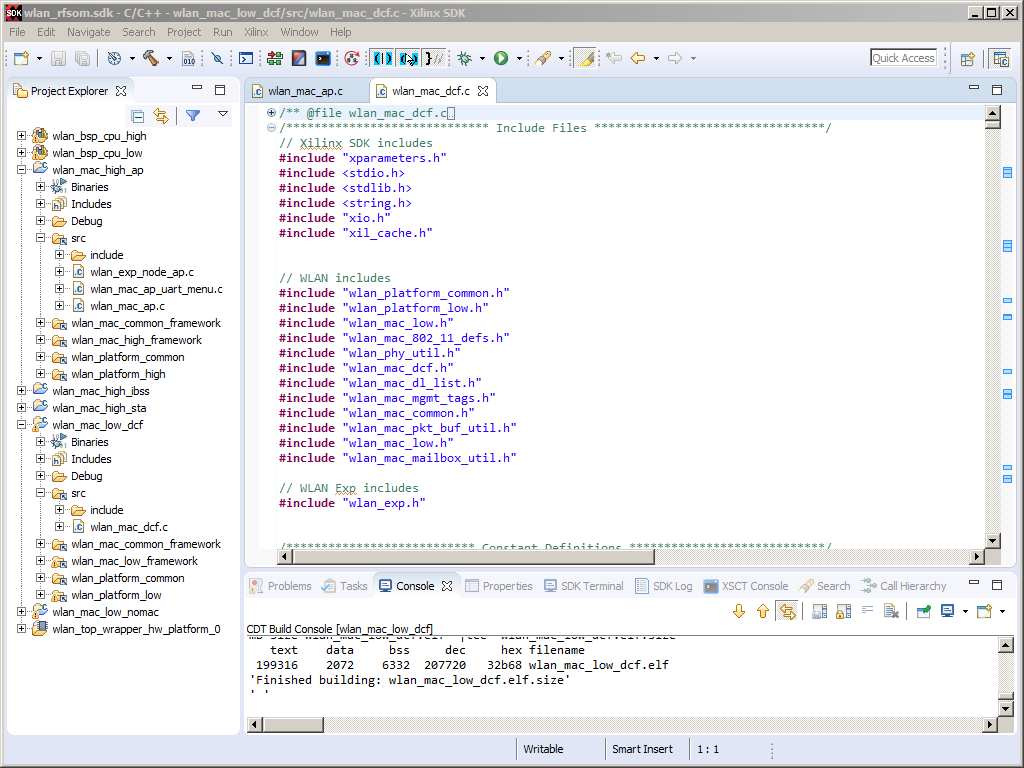802.11 MAC/PHY - MAC Software
Our 802.11 stack provides a fully programmable MAC. All MAC behaviors are implemented in bare-metal C running in MicroBlaze CPUs in the FPGA fabric. This architecture provides full flexibility throughout the MAC with rapid, software-only iteration on MAC protocol changes.
Our 802.11 MAC implementation is split between high and low level MAC functions.
The high-level MAC is responsible for managing association state, queueing packets for transmission, and interfacing to external traffic sources.
The low-level MAC is responsible for PHY configuration, real-time medium access, and coordinating Tx and Rx events according to a particular MAC protocol.
Our 802.11 MAC software stack is implemented in the Xilinx SDK, part of the Vivado tool suite. The MAC software design is delivered as an SDK workspace with MAC software applications, BSPs for each CPU, and the FPGA hardware project exported from Vivado.
| High-Level MAC Applications | Low-Level MAC Applications |
|---|---|
|
|
| High-Level MAC Framework | Low-Level MAC Framework |
|
|

